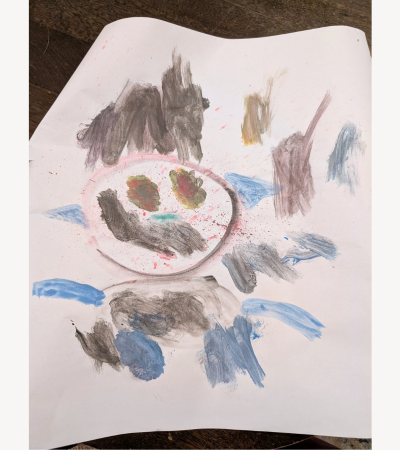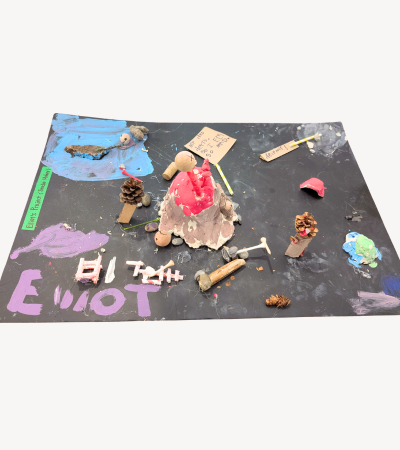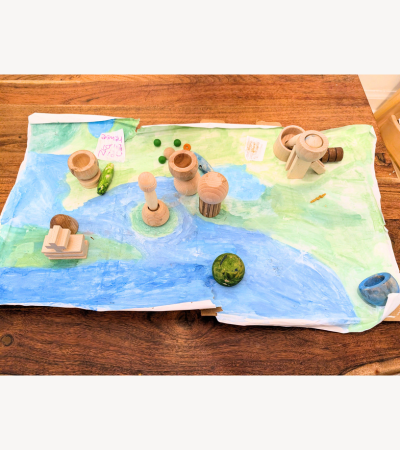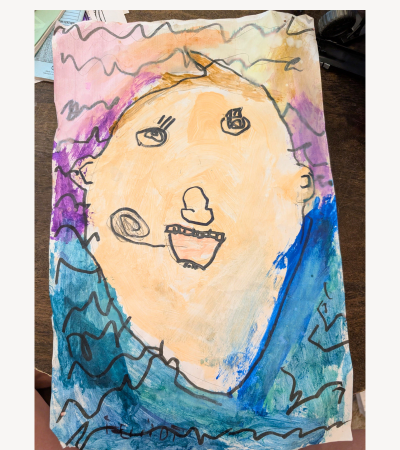Menu
-
- Shop Halloween Toys and Books
-
Shop Gifts By Age
- Gifts For a 0-6 Month Old
- Gifts For A 6-12 Month Old
- Gifts For A One Year Old
- Gifts For A Two Year Old
- Gifts For A Three Year Old
- Gifts For A Four Year Old
- Gifts For A Five Year Old
- Gifts For A Six Year Old
- Gifts For A Seven Year Old
- Gifts For An Eight Year Old
- Gifts For A Nine Year Old
- Gifts For A Ten Year Old
-
Shop Gifts By Budget
- New Arrivals
-
Toys
- Large Active Toys
- Animal Toys
- Arts & Crafts
- Award-Winning Toys
- Bath Toys
- Birthday Wishlists
- Building Toys
- Cars, Trains, & Trucks
- Games
- Instruments
- Loose Parts Play
- Loot Bag Toys
- Made in Canada
- Outdoor Toys
- Pretend Play
- Puzzles
- Sensory And Fidget Toys
- Sensory Bin Tools & Fillers
- STEM Toys & Activities
- Toronto-Themed Gifts
- Travel Toys
- Wooden Toys
- Waiting Room Toys & Furniture
-
Montessori Materials
- Montessori At-Home Program
-
Montessori Furniture
-
Bundles & Sales
-
Books
-
Shop By Age
-
Shop By Brand
- Brands A-F
- Brands G-L
-
Brands M-R
- MagicPlaybook
- Magna Tiles
- Make Believe Ideas
- Makedo
- Manhattan Toys
- Math for Love
- Milaniwood
- MindWare
- Mojo Toys
- Moluk
- Moulin Roty
- Native Northwest
- nic
- Nienhuis
- Ooly
- Opinel
- Ostheimer
- Papoose
- Peaceable Kingdom
- Plan Toys
- Plus-Plus
- Preschool Collection Watches and Timers
- Ravensburger Puzzles
- Real Life Pages
- Brands S-Z
-
- 866-901-4696
- Gift Registry
- Login


5 Fine Art Activities for Young Children
4 min read
Giving children the opportunity to try fine art activities is a great way to:
- Strengthen their Fine Motor Skills - using art materials, like paint brushes, clay, crayons, etc. builds hand and finger strength, preparing children for writing and other daily tasks.
- Engage the Senses - supports sensory-rich exploration.
- Invite Creativity and Self-Expression - art allows children to explore and express feelings and ideas they may not have the words for yet.
- Develop Focus and Self-Regulation - the calming, repetitive motions of art activities help children develop patience, concentration and self-regulation
Katie has put together the 5 most well-enjoyed fine art activities from her last school:
1. Watercolour Painting

Age: 3 years and up
Watercolour paints make a beautiful addition to a child’s art shelf. They invite children to explore the chromatic sense, how colours can gently blend and change, from light to dark or one shade into another.
Materials Needed:
- Watercolour paints
- Watercolour paper
- Small bowl for water
- Paintbrush
For inspiration, take your watercolour paints and paper to a local park or your backyard and talk about what you see. Parents are encouraged to paint too - it can be pretty calming!
Tip: You could introduce a child younger than 3 to watercolour painting, but it's not recommended to provide them with an entire paint palette. For toddlers, you can simply cut out 3 colours at a time.
2. Sculptures

Age: 3 years and up
For this activity, children are invited to sculpt whatever they feel inspired to or use real objects as a starting point.
Materials Needed:
- Air-dry clay or playdough
- Tools, like a rolling pin, plastic knife, cookie cutters, etc.
- Mat or clean surface to work on
Invite your child to shape and mold the clay. If they’re unsure on how to get started, you can give them ideas, i.e. show them a picture or display a favourite toy. Let them get creative, remember the end result doesn’t matter!
Tip: This activity is also great for language development because it generates a lot of conversation, i.e. talking about the different components of things you’re making, shapes, sizes, etc.
3. Collage Art

Age: 3 years and up
Collage is a popular fine art technique used by artists to combine different materials and textures. For this activity, provide a variety of fabric scraps, scraps of paper, loose parts, craft materials, etc. to explore and create with.
Materials Needed:
- Thick paper (like cardstock) or cardboard
- Glue - I recommend white glue because it sticks better than a glue stick, although messier
- Collage materials - anything goes, as long as it can be glued. Cut up old magazines, rip up construction paper, collect loose buttons, etc.
Invite your child to glue the materials and create a collage. Talk about the different textures and colours. I’d suggest keeping a damp cloth nearby for sticky fingers.
Tip: You could introduce this activity with children younger than 3. Just don't give them a basket full of collage materials, maybe start with 5-10.
4. Self Portrait

Age: 4 years and up
Self-portraits have long been part of fine art, with famous examples by artists like Frida Kahlo, Vincent van Gogh and Pablo Picasso. They invite children to explore observation skills and self-expression.
Materials Needed:
- Mirror
- Blank paper
- Art medium of choice (crayons, markers, pencil crayons, paint, etc.)
- Inspirational self-portrait artwork or a photo of your child
Set up a mirror on the table and invite your child to look at themselves and draw what they see. Display famous self-portraits in their art space for inspiration, or include a photo of your child for reference.
Tip: If your child isn’t sure where to start, guide them through drawing each part of the face - “Let’s start with your head, what shape is it?”
You can get as creative as you like, add scraps of fabric for clothing, yarn for hair or collage materials for fun textures.
5. Paint like Michelangelo
Age: 4 years and up
Michelangelo painted the ceiling of the Sistine Chapel by carefully working on a large surface above his head.
For this activity, children are invited to paint in a unique position and explore creating art on a larger scale.
Materials Needed:
- Large sheet of paper or cardboard
- Crayons, markers or paint sticks. Tip: You could also use paint, but if you do, I would suggest doing this activity in old clothes and with a large sheet under the paper to catch the drips.
- Table
- Tape
Remove all the chairs from the table and tape a large sheet of paper to the underside of the tabletop. You can do this with a child-sized table, which will be lower and the child can lie down, or at a regular-sized table and the child can explore different positions with their body.
If you’d rather not do this under a table, creating art on a large scale is fun anywhere. You can do it on the floor, with the paper taped to a wall, etc.
No Need To Rush It...
These art activities don’t need to be done in a day. Leave them out so they can add to them over time. And when they’re finished, display their art at their eye-level so they can admire their creative work 🙂
It’s also worth mentioning that it’s important to praise your child’s efforts rather than the end product. You love your child’s art and you can tell them that, but also talk to them about the ideas they had, the colours they chose, the new techniques they tried, etc.
This will help to foster their creativity, rather than making them think art has to be perfect or approved of by others.
Lastly, if you think your child isn’t interested in making art, you might try this first: https://themontessoriroom.com/blogs/montessori-tips/the-easiest-way-to-encourage-independent-play
Join Our Montessori Community
Sign up to get weekly activities, free printables, Montessori parenting guidance, and so much more.
Plus, get $10 off your first order of $100+.
Like this article? Get new articles, weekly activities, free printables, Montessori parenting guidance, and so much more.
One mom recently shared:
"Your newsletter is always SO great. It is one of the few I open and read weekly. You provide so much value. Thank you!"


